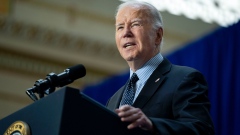Nov 6, 2020
Are we prepared for a COVID-19 vaccine? Lessons learned from Ontario's flu shot shortage
By Anne Gaviola
Lessons learned from Ontario’s flu shot campaign
As far as pandemic problems go, the chief executive officer of the Ontario Pharmacists Association says issues related to this year’s flu shot are “the best kind of problem” to have.
“We’re seeing supply challenges because of unprecedented demand but there’s greater awareness of the importance of getting the flu shot,” Justin Bates said in a phone interview. “This will help avoid the ‘twindemic’ we keep hearing about whereby the hospital system would be overwhelmed by those entering with COVID-19 symptoms and seasonal flu.”
The 500-per-cent surge in demand for the influenza vaccination, compared with last year, may be a sign that people are taking health issues seriously and listening to government messaging encouraging inoculation.
Bates said even though there is a shortage, Ontario is avoiding a worst-case scenario.
This should provide some comfort to the people in Ontario who had a hard time getting their flu shot, or who are still waiting. But according to Bates, these problems have served as a kind of training ground to help pharmacists prepare for the coming months when one or several COVID-19 vaccines are expected to be approved for the masses.
By riding out these “hiccups,” Bates said the province is collectively more ready to administer a mass COVID-19 vaccination program, which is important because getting the regulatory greenlight after clinical trials is but the start of a long, arduous process.
The seeds for the current flu shot shortage were sown in February, before the pandemic, when government officials decided to purchase 16 per cent more influenza vaccines than in the previous year based on the data available at the time.
Manufacturing doses continued through the summer and the vaccines arrived in waves — weeks earlier than in years past, at the start of October. They were met with frenzied demand in pharmacies.
- Flu shot demand up and getting more supply won't be easy
- 39% of Canadians say they would immediately get COVID vaccine: Study
- Canadians divided over mandatory COVID-19 vaccines, priority inoculations
RELATED
The Ministry of Health ordered 5.1 million doses for Ontario and has sent 800,000 units to pharmacies so far, and another shipment is expected this month.
The province had earmarked less than one-third of the total vaccines for pharmacies, but Bates said authorities underestimated how many people would choose to be inoculated at their local drugstore.
He’s advocating for pharmacies and pharmacists to have a larger role in COVID vaccine distribution when the time comes, given their expanding role in inoculation against the flu, as well as coronavirus testing. For example, Bates says the province granted them the ability to administer shots outside of pharmacies, which he says they put to good use.
“We have some great stories of pharmacists who went to first responders like police and fire stations and ambulatory services so that they could get priority and high-risk populations vaccinated. I could see a very similar type of model that would complement public health units like primary care physicians,” Bates said.
“The easier you make it for people to get vaccinated, the more likely it is that they will — whether that’s taking it to their place of employment, to schools, so people don’t have to travel or bounce around to find it.”
Bates said conversations with all levels of government have been non-partisan, “collaborative and constructive” so far.
The Ontario government said in an email to BNN Bloomberg that it is working with the federal government and other provincial and territorial partners to plan for the delivery of a COVID-19 vaccine when one becomes available. The statement pointed out that Ottawa has put in place several advance-purchase agreements with companies for COVID-19 vaccine doses, and is working to ensure that Ontario is prepared for a vaccine.
Bates said the challenges of the current flu shot rollout highlight the need for real-time data.
“Pharmacies are one of the few providers that have that link to the government on the systems side so we can report in real-time on vaccinations. We need to make sure we’re complimenting other units, long-term care homes in particular, hospitals and primary care physicians,” he said.
A recent Angus Reid Institute poll found 39 per cent of Canadians would immediately get a COVID vaccine once it becomes available. However, according to Bates, there won’t be enough supply on day one for everyone who wants to get vaccinated. He said any program, whether federal or provincial, will need to identify who is eligible for the first wave of the vaccine, which could include high-risk populations, the elderly and first responders.
Ensuring that everyone who wants to get inoculated can do so quickly will require advanced planning and an inclusive approach, Bates said.
“You need flexible hours, including evenings and weekends for people who work or have family obligations,” he said. “It’s not your traditional model of medicine.”






